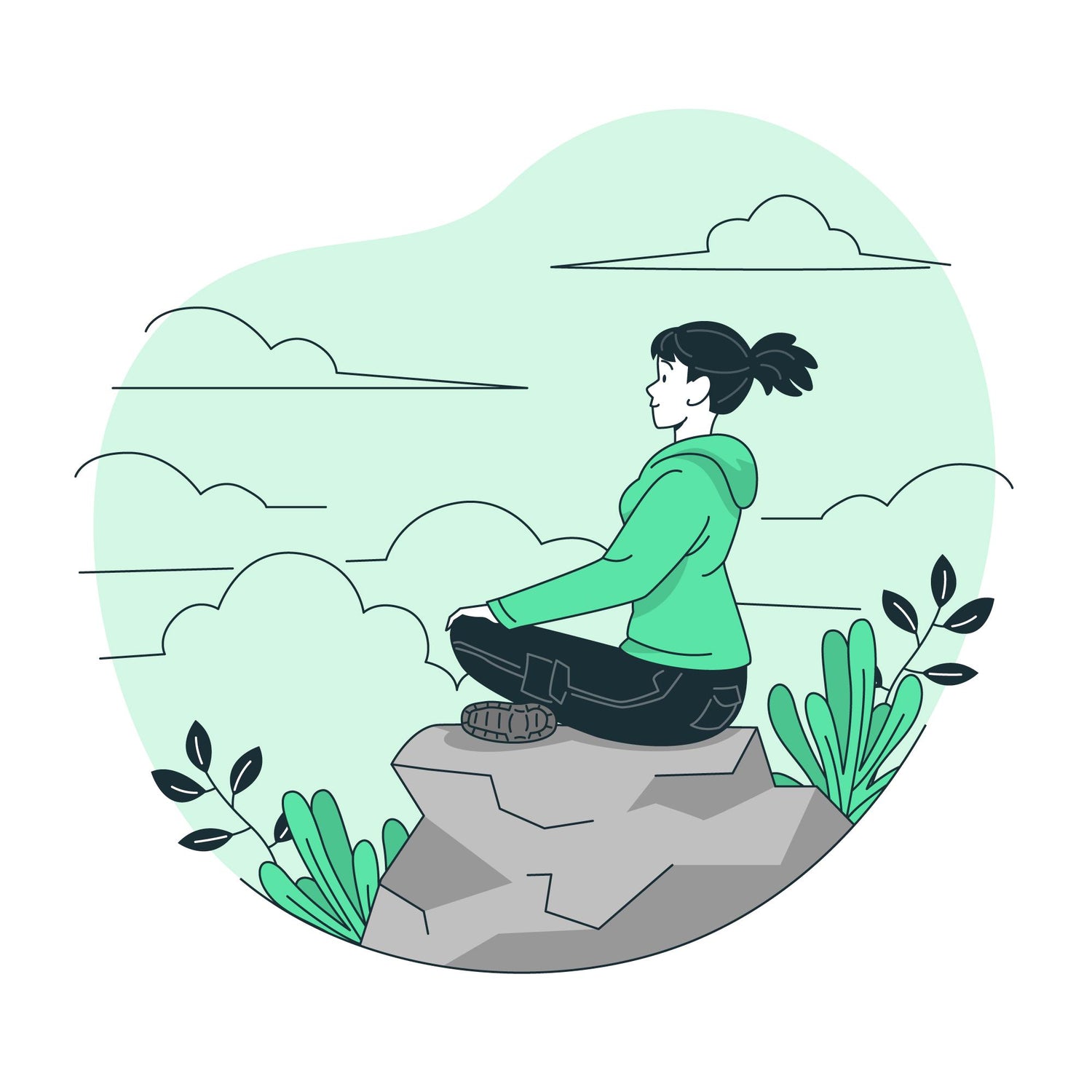By developing mindfulness, we acquire the capacity to consciously make decisions in each moment that contribute to a healthier and more joyful existence.

Awareness is our skill in observing, without judgment, the events in our external environment and within ourselves. This encompasses our physical sensations, emotions, thoughts, mental habits, and values. For example, as you read these words, are you conscious of your breathing, the air flowing in and out? How does your posture affect your alertness and relaxation? You might notice tension in your body or shallow breathing. With this awareness, you can ease tense areas and deepen your breath. This conscious return to awareness interrupts automatic behaviors, giving you greater control over your reactions. It's a way of reclaiming your self-agency.
"Living on autopilot, reacting to life unconsciously and automatically, might seem simpler, but it strips us of the choice in our thoughts and focus."
Awareness is a natural skill, yet often forgotten. We get swept up in the momentum of our habits and circumstances. David Foster Wallace, in his commencement speech "This Is Water" at Kenyon College, illustrates our unawareness with a story about fish oblivious to the water they swim in. He describes two young fish who don't understand what water is when an older fish mentions it. Similarly, we often overlook the immediate reality around us, losing connection with what's truly significant and with each other. Living on autopilot, reacting to life unconsciously and automatically, might seem simpler, but it strips us of the choice in our thoughts and focus.
To consistently reconnect with awareness amidst life's chaos, it's crucial to recognize various routes that lead back to this inherent ability—be it through internal or external, sensory or cognitive, or meta-awareness.
Inner vs. Outer Awareness
Inner awareness is our capacity to perceive and understand our internal state. It enables us to notice our bodily sensations, thoughts, emotions, judgments, preferences, and values. For example, when something triggers us, we might experience a rapid heartbeat, shallow breathing, or tense shoulders. Inner awareness helps us decipher the reasons behind our reactions. Sometimes, the root cause isn't immediately apparent, which is why we cultivate other mindfulness skills alongside awareness.
"The more adept we become at observing both our internal state and the world around us, the greater our ability to respond effectively to various life situations."
Outer awareness extends beyond the obvious to include subtle shifts, movements, and behavioral patterns in those around us. Sometimes, we might be so engrossed in our inner experiences that we overlook the body language and emotions of our children, partners, or colleagues. It's equally important to be attuned to changes in our surroundings, like emerging technologies, political shifts, climate change, and social trends, enabling us to adapt, react appropriately, and, when needed, lead change.
Therefore, it's vital to cultivate both inner and outer awareness. As we enhance our sensitivity to finer internal emotions and sensations, we can apply this heightened awareness to external events. The more proficient we become in observing our inner and external environments, the more options we have to respond adeptly to whatever challenges arise.
Sensory Awareness vs. Cognitive Awareness
In contrast to our cognitive mind, which is involved in planning, remembering, and intellectual tasks, sensory awareness allows us to experience the present through our senses—sight, smell, touch, taste—in a rejuvenating way. When mental fatigue sets in, it's beneficial to reduce cognitive activity and engage in sensory experiences. Enjoying a piece of dark chocolate, feeling the warmth of a morning coffee, or basking in sunlight can provide significant relief for both mind and body, reinforcing our ability to maintain mindfulness amidst daily life.
Neuroscientists have found a crucial distinction: thinking and sensing are distinct processes that don't happen simultaneously. This means we can't engage in both at the same time. Why does this matter? Sensory awareness offers a rapid escape from the confines of our thoughts, bringing us back to the present moment. We often get caught up in dwelling on past troubles or fretting about future concerns, missing out on the world's beauty—like the melody of birdsong, the gentle sunlight of winter days, or a sky blanketed in white clouds. These moments provide a necessary break from our constant thinking, rushing, and striving. While we understand this intellectually, breaking free from ingrained habits that seem to control us can be challenging. This is where meta-awareness plays a role.
Meta-Awareness
Our minds naturally wander, yet we possess the ability to recognize this distraction. This awareness of our mental state and habitual thought patterns is known as meta-awareness. It enables us to realize when we're diverted from the present moment. Consider, for instance, as you read this, are you fully present, or are your thoughts drifting to an email you need to send, a conversation you had, or perhaps the tempting chocolate cake in your fridge? These examples illustrate how our minds often stray, disconnecting us from what brings joy and meaning. Meta-awareness allows us to identify these patterns and refocus on what truly enriches our lives.
Meta-awareness also aids in managing our thoughts. When we notice our thoughts veering away from our intentions, meta-awareness helps steer us back, aligning our actions with our goals. It's important to recognize, however, that not all mind wandering is detrimental. In fact, it can spark creativity. Allowing our minds to roam without stress can lead to innovative ideas. The key is knowing when to let the mind wander and when to remain present. Meta-awareness gives us this discernment.
Awareness is a crucial skill in observing our internal and external realities, our sensory experiences, and our cognitive processes. It forms the foundation of mindfulness in the real world, enabling us to effect change in ourselves, our families, our workplaces, and our communities.
Your Position on the Awareness Continuum
Before exploring ways to enhance your awareness, reflect on your current level of awareness—inner, outer, sensory, cognitive, and meta-awareness. You might also consider taking the mindfulness assessment available on our website and use the results as a tool for contemplation. The aim is not to judge or overestimate your awareness skills but to understand your innate capacity for awareness and how effectively you apply it in meaningful situations.
Examine the Awareness Continuum table to assess the benefits of awareness and your tendencies. Observe the effects of mindful awareness, the consequences of low awareness, and the pitfalls of misdirected awareness, which masquerades as mindfulness but actually hinders it.
A Mindfulness Exercise for Cultivating Open Awareness
Consider the analogy of a flagpole. Imagine your awareness as the flagpole and your mind as the flag, waving in the breeze. No matter how turbulent the weather, the flag remains attached to the pole. In the same way, by reinforcing your connection to awareness, you'll be able to navigate life's challenges with steadiness and poise. This involves bringing awareness to various aspects of your experience, such as your breath, bodily sensations, sounds, other sensory inputs, thoughts, emotions, and the flow of each moment. Practicing open awareness equips you to approach life's experiences with a renewed perspective.
I suggest engaging in this short exercise daily.
-
Begin by focusing on your breath, using it as an anchor to the present. Once your attention feels steady, expand your awareness to include bodily sensations, sounds, thoughts, and then your ongoing experience. Allow all sensations to emerge and fade within the expansive, sky-like nature of your open awareness, without resisting or clinging to any particular experience. Simply be present with whatever unfolds.
-
Afterward, take a moment to reflect on what you've learned about your ability to stay present and the nature of your mind. If it helps, ponder or write about these questions:
- What did you learn about your mind's quality and your capacity to remain present moment by moment?
- What factors enhance your awareness, and what hinders it?
- What are your goals in developing awareness?
- As you conclude, integrate these insights and intentions regarding awareness. Before moving on to your next activity, see if you can maintain awareness of your thoughts, words, and all actions and interactions.


